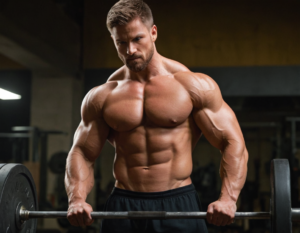In the realm of fitness, the pursuit of strength is often entwined with the fear of becoming overly muscular or “bulky.” Many individuals who strive for increased power shy away from weight training due to concerns about adding unwanted size. However, understanding the science behind strength training can help you build impressive power without compromising your desired physique. This article delves into the science of strength, addressing common questions, dispelling myths, and offering actionable strategies to build power while maintaining a lean physique.

The Science Behind Strength Training
Strength training isn’t just about lifting heavy weights—it’s about understanding how to stimulate muscle fibers effectively to build power. The key is to focus on specific types of exercises and training techniques that promote muscle strength without excessive hypertrophy (muscle growth). Here’s a breakdown of the science:
- Muscle Fiber Types: Your muscles contain different types of fibers: Type I (slow-twitch) and Type II (fast-twitch). Type I fibers are endurance-oriented, while Type II fibers are responsible for explosive strength and power. Training to build strength primarily targets Type II fibers, which can increase power without necessarily increasing muscle size.
- Training Variables: To build strength without bulk, it’s crucial to manipulate training variables such as weight, sets, reps, and rest intervals. Typically, lower reps with heavier weights (1-5 reps per set) enhance strength, while moderate to high reps (6-12 reps) contribute to muscle size. Thus, focusing on lower-rep, high-weight exercises can enhance power without significant hypertrophy.
- Progressive Overload: This principle involves gradually increasing the weight or resistance you use in training. Progressive overload stimulates muscle strength adaptation while keeping muscle growth under control. By incrementally increasing your weights, you challenge your muscles to grow stronger without excessive bulk.
Frequently Asked Questions
1. Can I build strength without getting bulky?
Absolutely. By emphasizing lower rep ranges with heavier weights and focusing on exercises that target strength rather than hypertrophy, you can develop significant power without increasing muscle size. Additionally, incorporating compound movements (e.g., squats, deadlifts, bench presses) and focusing on strength-specific programs can aid in achieving your goal.
2. How do I avoid gaining unwanted muscle mass?
To avoid unnecessary muscle mass, concentrate on strength training protocols that prioritize neural adaptations over muscular hypertrophy. Incorporate exercises with low to moderate volume, high intensity, and longer rest periods between sets. Balancing your routine with cardiovascular workouts can also help maintain a lean physique.
3. What role does nutrition play in strength without bulk?
Nutrition is a crucial component of your training regimen. To build strength while avoiding bulk, consume a balanced diet rich in protein, healthy fats, and complex carbohydrates. Ensuring you’re in a slight caloric surplus can support muscle repair and strength gains without contributing to excessive muscle growth.
4. How often should I train for optimal strength gains?
Training frequency depends on individual goals and recovery capacity. A typical strength training program involves 3-4 sessions per week, allowing sufficient rest for recovery. Incorporating variety in your routine and focusing on different muscle groups can prevent overtraining and ensure balanced strength development.
5. Can bodyweight exercises help build strength without adding bulk?
Yes, bodyweight exercises can be effective for building strength without adding bulk. Exercises such as push-ups, pull-ups, and planks challenge your muscles and improve strength without the need for heavy weights. Incorporating progressive bodyweight variations can also enhance strength while maintaining a lean physique.
Key Strategies for Building Power Without Bulk
- Focus on Compound Movements: Incorporate compound exercises that work for multiple muscle groups simultaneously, such as squats, deadlifts, and bench presses. These movements not only increase overall strength but also engage stabilizing muscles, enhancing power.
- Implement Strength-Based Training Programs: Design your workout routine around strength-focused programs, such as low-rep, high-weight schemes. Incorporate exercises that emphasize neuromuscular adaptation rather than muscle growth.
- Optimize Recovery: Ensure adequate rest and recovery between workouts to prevent overtraining and facilitate muscle repair. Recovery is essential for strength gains and helps maintain a lean physique.
- Incorporate Functional Training: Include functional training exercises that mimic real-life movements, such as kettlebell swings and medicine ball throws. These exercises improve functional strength and power without contributing to bulk.
- Monitor Nutrition and Hydration: Maintain a balanced diet and stay hydrated to support strength development while avoiding excessive muscle growth. Focus on nutrient-dense foods that aid in muscle repair and overall performance.
Conclusion
Building strength without becoming bulky is achievable with the right approach and understanding of strength training principles. By focusing on lower-rep, high-weight exercises, incorporating compound movements, and managing nutrition and recovery, you can enhance your power while maintaining a lean physique. Embrace these strategies, and you’ll be well on your way to achieving your strength goals without sacrificing your desired body composition.




